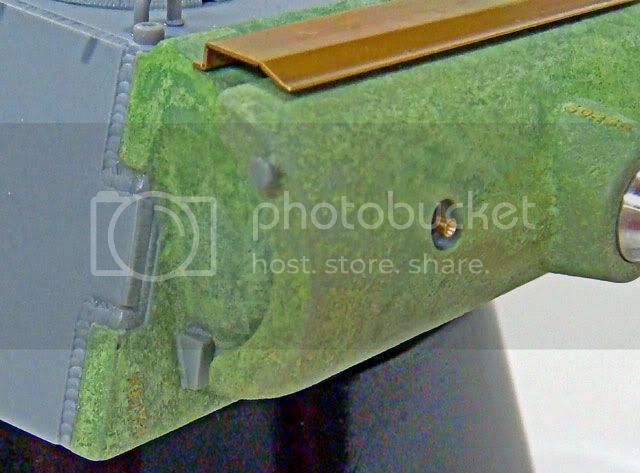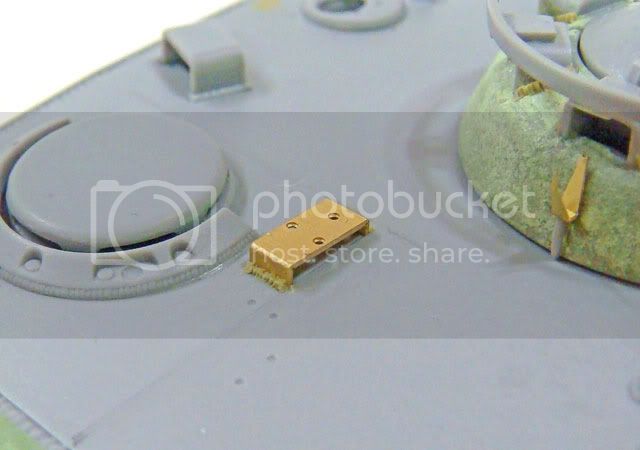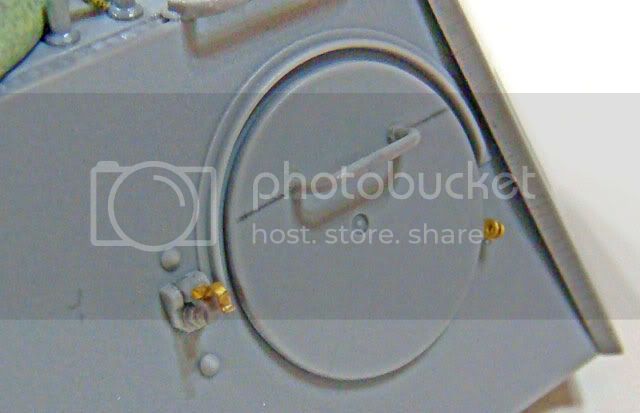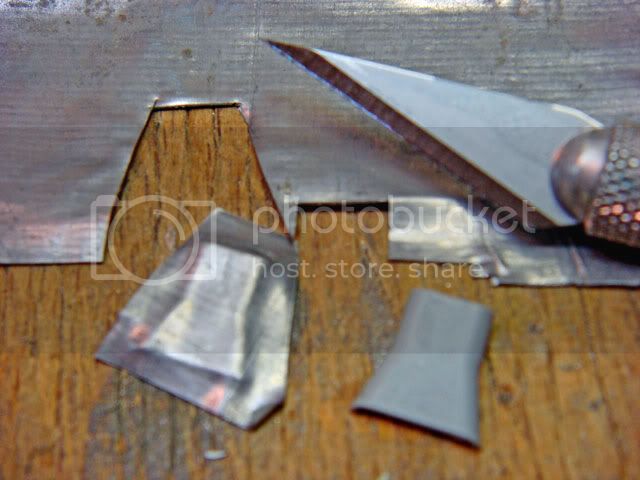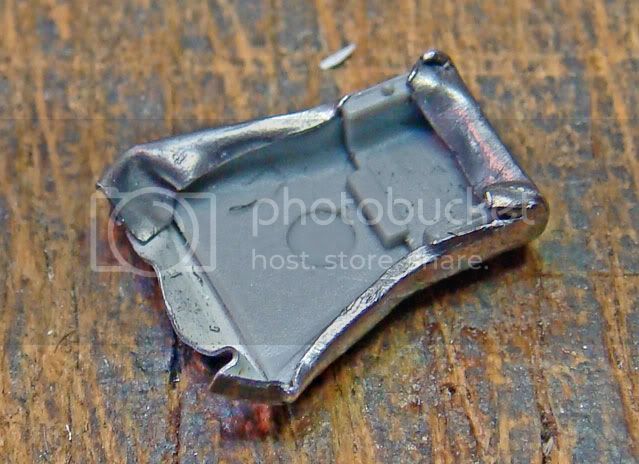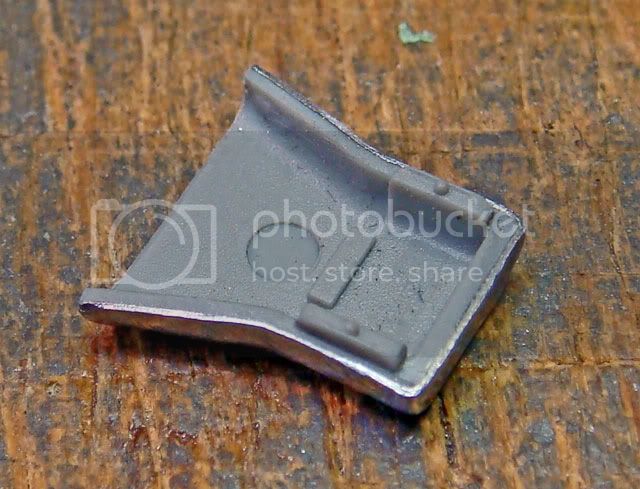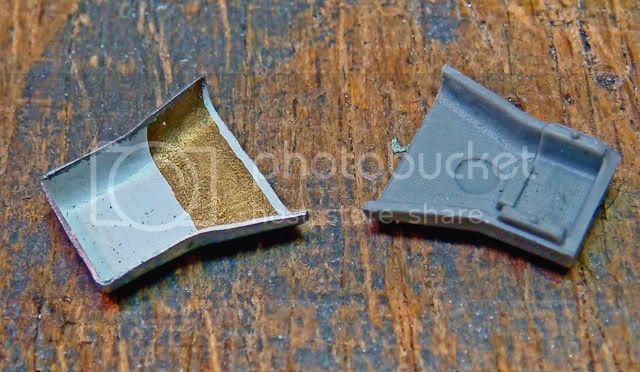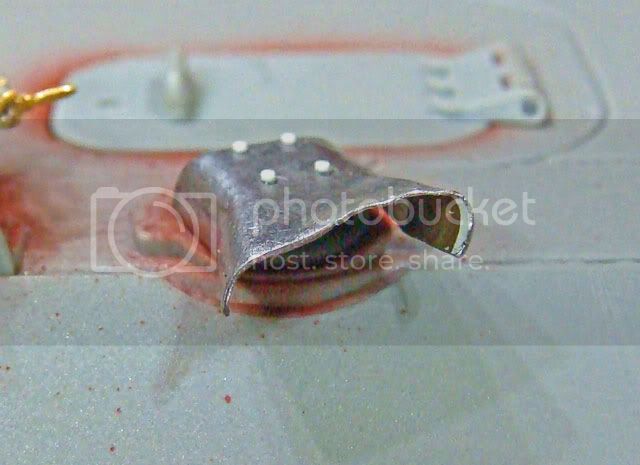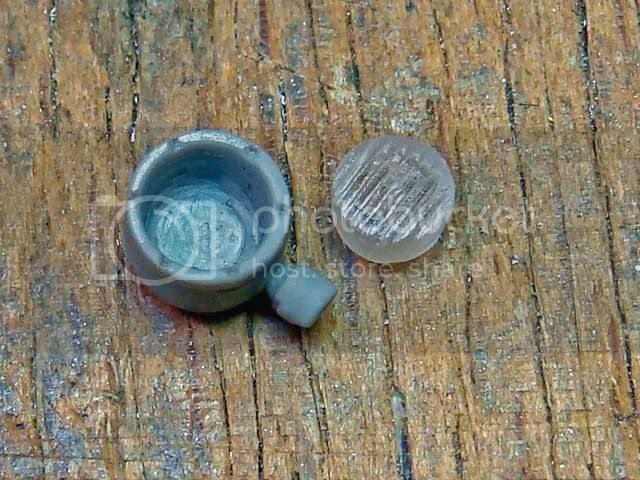A little up-date for today. I got some of the basic and initial work done on the major turret parts.
I'm using the Aber gun barrel. It's a perfect replacement and fit for the kit parts. The muzzle break parts break down is typical for Aber. The PE locking tab and bolt needed to be reduced in width to fit the milled slot in the rear part of the muzzle break. Also, the aluminum barrel needed to be sanded a bit to fit into the hole in the assembled muzzle break.
Appearently Aber is aware of this fit problem since the instructions show to use a file to open the muzzle brake hole to accept the barrel. I found it easier to slightly sand the barrel with a Flexi-File to get it to fit. I started with the file, but immediately saw that "bunging-up" the inside of the brass muzzle brake was the likely result.
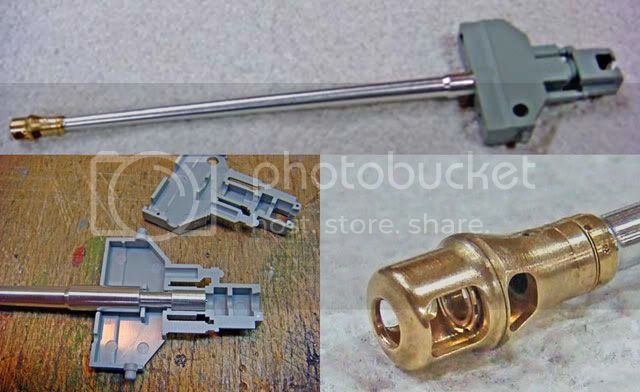
The gun mantlet needs a bit of detail work. I also decided to add the "thickening" that is seen on some examples of this mantlet. I used Milliput putty for this.
The casting numbers on the top of the gun barrel collar match the part number for the mantlet: 50255. I used thePE numbers and letters included with the AM-Works Panther up-date set for these. These are a very nice addition to the set. They're easy to attach using liquid plastic cement to soften the surface of te kit part. Then just press the PE numbers and letters into the softened surface and allow the plastic to dry.
I still need to add the cast texture to the mantlet and will do so after the putty sets and the glue on the lifting lugs and PE numbers dries.

The turret itself assembles quite cleanly with some care. The entire front face of the Panther turret is a single large casting. DML does a very nice job of this, but there are still seams that need to be filled. The one across the top front edge is large enough that I used Milliput to avoid likely shrinkage. I also filled the three rectangular attachment holes on the turret roof for the poison gas detection panel holders. The tank I'm building was likely built a few weeks before these were installed. I filled the hole for the compass mounting plate, too. I'll use the AM-Works PE plate which mounts flush to the turret roof surface.
Here you can see the rubber bands holding the main turret parts together until they dry overnight.

Once the putty sets and glue dries, I'll sand and add the cast texture to the front plate.
I've added the three-letter manufacturer's code to the lower right front corner of the front plate casting. These letters, "KMY," were the code for the Eisenwerke Oberdonau GmbH, Linz an der Donau (accoriding to John Walter's book, "German Military Letter Codes"). The number "4" probably indicates manufacture in 1944.

Again, I used the AM-Works PE letters and numbers.
Finally, I've done the basic clean-up and gluing for the commander's cupola. DML has done an outstanding job on this sub-assembly. They've added the bumper, stop and hold-open for the hatch. The periscope openings are recessed under their armored "hoods." The interior structure is very accurately replicated. Cleaning up the periscope openings on the slide-molded outer cupola part takes a bit of time, but the results are worth the effort.
I've enhanced the cast texture a bit since I like the extra interests that comes from the contrasts in texture on the model. I'll also enhance the weld marks for the periscope hoods after the putty cast texture dries overnight.

So, that's all for now.





























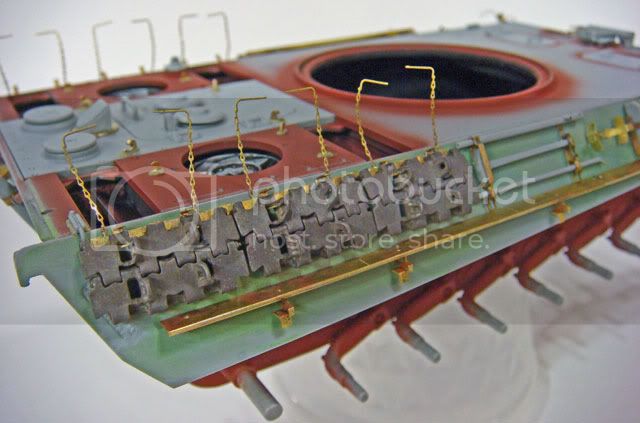


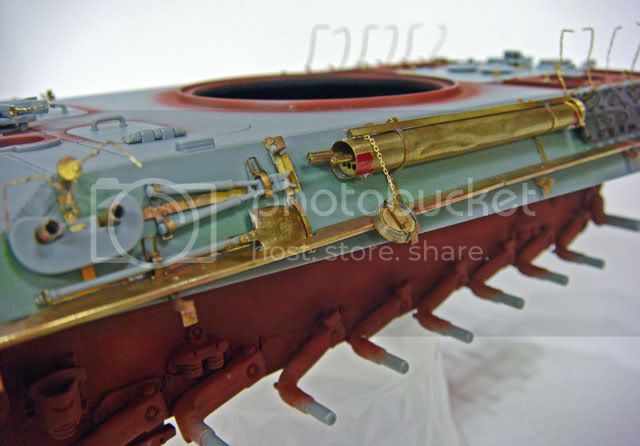
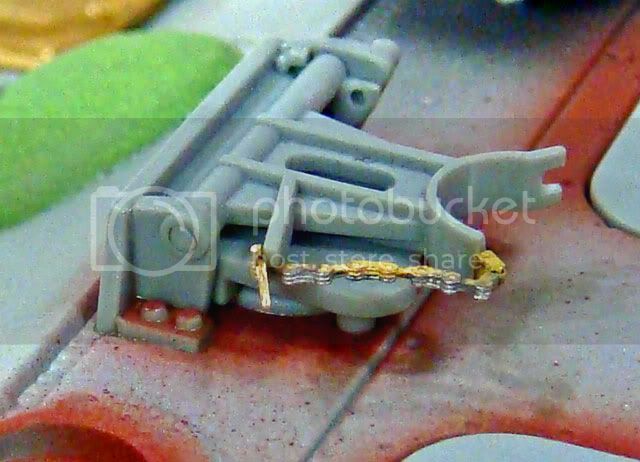




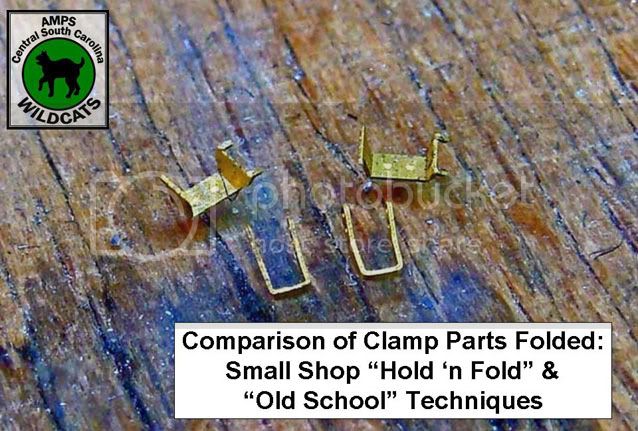













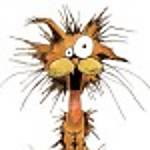



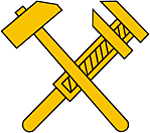


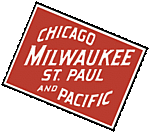







 )
)

